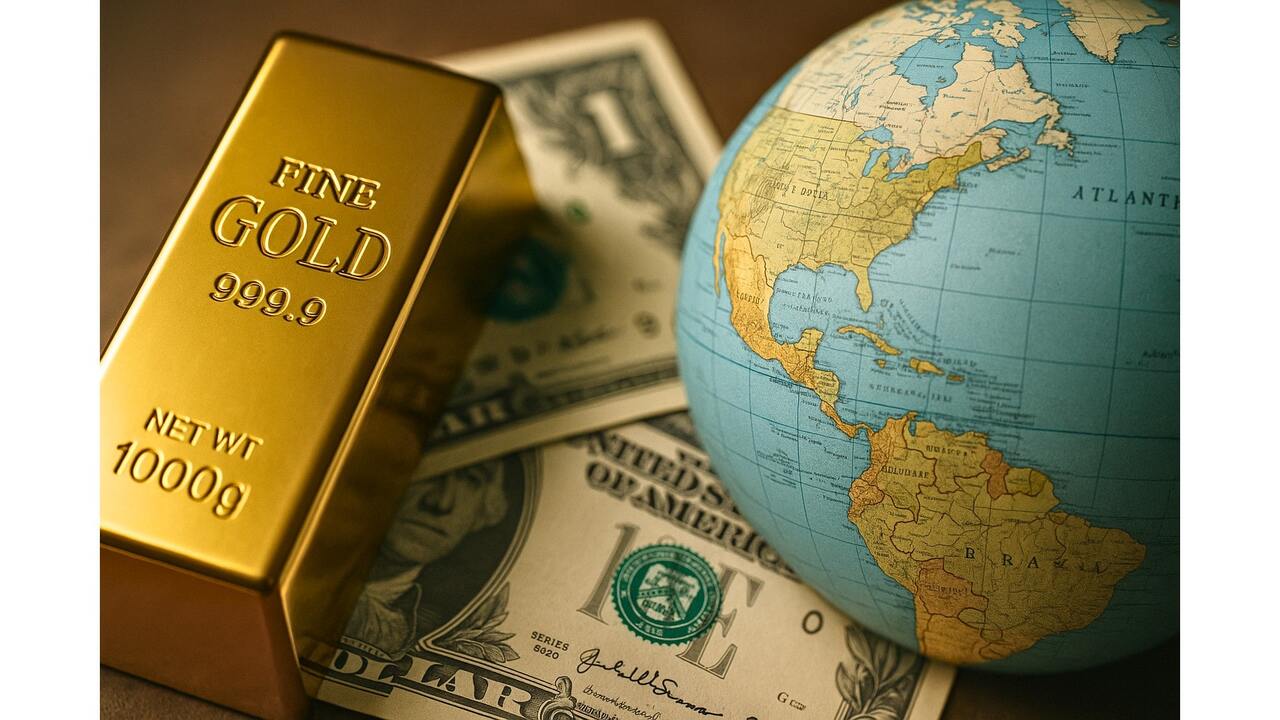(Money Metals News Service) In this week’s episode of the Money Metals Midweek Memo, host Mike Maharrey delivers a compelling explanation of what money really is—and why sound money, such as gold and silver, remains the superior store of value compared to fiat currency issued by governments.
What Money Really Is
Most people think of money as paper bills or digital numbers in their bank account. But those forms are only modern representations.
True money, i.e., sound money, Maharrey explains through the lens of the Austrian School of Economics, is a universally accepted medium of exchange that arises naturally through market activity—not by government decree.
In contrast to fiat currency, which is conjured into existence by central banks, sound money—typically gold or silver—emerges spontaneously over time because of its utility, scarcity, and historical acceptance.
The Problem with Barter
Barter systems suffer from what’s called the “double coincidence of wants.” If you make boats but need bread, you must find a baker who needs a boat.
That’s inefficient.
Money solves this by enabling indirect exchange.
Instead of trading goods for goods, you trade goods for money, which can then be exchanged for anything else.
Historically, societies gravitated toward commodities that could serve this function best—durable, portable, divisible, and scarce. Gold and silver naturally rose to the top.
The Rise of Fiat
Unlike gold and silver, fiat currency did not arise from the market. It is declared money by the state—fiat meaning “let it be done.” Initially, paper notes were redeemable for gold or silver. But over time, governments abandoned convertibility.
Today, fiat currencies like the dollar, euro, yen, and yuan are backed by nothing but political promises. This introduces instability because governments, left unchecked, will always choose to expand the money supply to fund their priorities. And they do so without the natural constraints that sound money imposes.
Inflation by Design
Fiat systems allow for virtually unlimited currency creation.
In 2020, the U.S. money supply grew by a staggering 19.1%. By comparison, the global supply of gold grows at a steady rate of just 1.4% to 2.2% per year.
Over time, this disparity leads to a decline in purchasing power.
Since President Nixon severed the dollar’s last ties to gold in 1971, the greenback has lost over 85% of its value.
What one dollar could buy then takes more than seven dollars today.
Meanwhile, the price of gold has surged from $35 an ounce to over $3,300.
This isn’t accidental. Inflation is baked into the fiat system.
Despite what central bankers claim, their goal isn’t to eliminate inflation—it’s to keep it just low enough that the public doesn’t revolt, but high enough to perpetuate government expansion.
As Maharrey puts it, inflation is not a flaw of fiat money; it’s the policy.
The Strength of Sound Money
Unlike fiat currencies, gold and silver cannot be printed at will. Their scarcity is fundamental. Aristotle laid out three key traits of good money: durability, portability, and divisibility. Maharrey adds a fourth—scarcity.
Gold and silver check every box.
They are resistant to decay, easy to carry, divisible into small units, and have been valued for millennia not only as money, but also as jewelry, ornamentation, and increasingly, industrial materials.
The Perth Mint demonstrates gold’s durability by melting and recasting the same 14-pound gold bar more than 65,000 times.
Try doing that with paper money.
Gold can be pressed into bars, coins, or even thin laminated goldbacks weighing just 1/1,000th of a troy ounce. It is useful in electronics, medicine, space technology, and telecommunications.
In the first quarter of 2025 alone, 80.5 tons of gold were used in industrial applications—far from useless.
Why Governments Prefer Fiat
Sound money limits government power. If currency is backed by gold, a government must acquire more gold to spend more money.
That’s a problem for politicians who prefer spending now and worrying later.
Fiat systems empower governments to fund deficits, wage wars, and expand welfare programs without immediate consequences.
Central banks enable this behavior through interest rate suppression and currency creation.
As Maharrey emphasizes, the Federal Reserve is the engine behind one of the largest governments in human history.
Governments claim to fight inflation, but in reality, they cultivate it. It is the tool that sustains their unchecked growth.
Every fiat currency in history has eventually failed.
The dollar, though dominant today, is following the same path.
Gold Is Real Money
Critics like Warren Buffett may scoff at gold, calling it unproductive or obsolete. But gold is neither.
Nearly half of global gold demand comes from jewelry.
It is also indispensable in computing, aerospace, medical diagnostics, and clean energy. It does not rot, rust, or degrade, and it remains valuable even when fiat currencies collapse.
Fiat money is smoke and mirrors. Gold is substance.
It is not dependent on anyone’s promise. It cannot be created out of thin air. It has stood the test of time—not because a government forced it on anyone, but because people freely chose it, over and over again, across cultures and centuries.
Choose Sound Money
You don’t have to accept the risks of a fiat system.
Even though we live in a world dominated by government-issued currency, you can preserve your wealth with sound money. Gold and silver offer a time-tested hedge against inflation, volatility, and the failure of political institutions. They don’t just represent money—they are money.
To begin securing your financial future with precious metals, contact Money Metals Exchange at 1-800-800-1865 or visit MoneyMetals.com to speak with a specialist.
You can also learn more about sound money via the Sound Money Defense League.
Real wealth doesn’t have to vanish with the next round of money printing. Sound money is still within reach—and it always will be.

